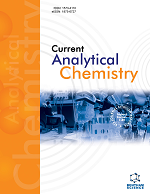
Full text loading...
Since the mid-20th century, polychlorinated biphenyls (PCBs) have emerged as one of the foremost anthropogenic organic pollutants in aquatic environments. Microphytobenthic algae of the genus Cylindrotheca have been recurrently employed in laboratory experiments to assess sediment toxicity. Recently, a novel strain of benthic diatoms belonging to the genus Cylindrotheca has been identified and characterized from PCB-contaminated sediments in the coastal region of Sevastopol Bay (Black Sea). This species of algae has high biomass productivity, the ability to synthesize fucoxanthin, and a variety of fatty acids. Cylindrotheca closterium is capable of metabolizing organic pollutants in bottom sediments.
The objective of the study was to investigate the effects of PCBs on the growth patterns and physiological responses of C. closterium through a 9-day experiment, subjecting the microalgae to varying concentrations of PCBs ranging from 0.0003 to 100 mg/L.
The experiments revealed that C. closterium could grow in environments containing concentrations of PCBs ranging from 0.0003 to 10 mg/L, indicating its resilience to moderate levels of PCB exposure. Additionally, adaptive biochemical processes were observed in C. closterium under PCB exposure. Notably, on the sixth day of the experiment, the culture transitioned into a stationary growth phase, accompanied by significant increases in total lipid content by 1.6 times and fucoxanthin by 4.6 times compared to the control. However, a pronounced decrease in culture growth was observed at a PCB concentration of 100 mg/L, coinciding with reductions in total lipid and fucoxanthin content, suggesting a tolerance threshold of C. closterium between 10 and 100 mg/L PCB concentrations. Furthermore, alterations in the fatty acid profile of C. closterium were noted, characterized by a decrease in polyene content and an increase in monoene fatty acids, under PCB exposure.
The study underscores the resilience of C. closterium to moderate PCB concentrations and highlights the complex physiological responses and adaptive mechanisms initiated in response to PCB exposure. The findings contribute to understanding the toxic effects of PCBs on C. closterium and provide insights into potential mechanisms underlying these effects.

Article metrics loading...

Full text loading...
References


Data & Media loading...

